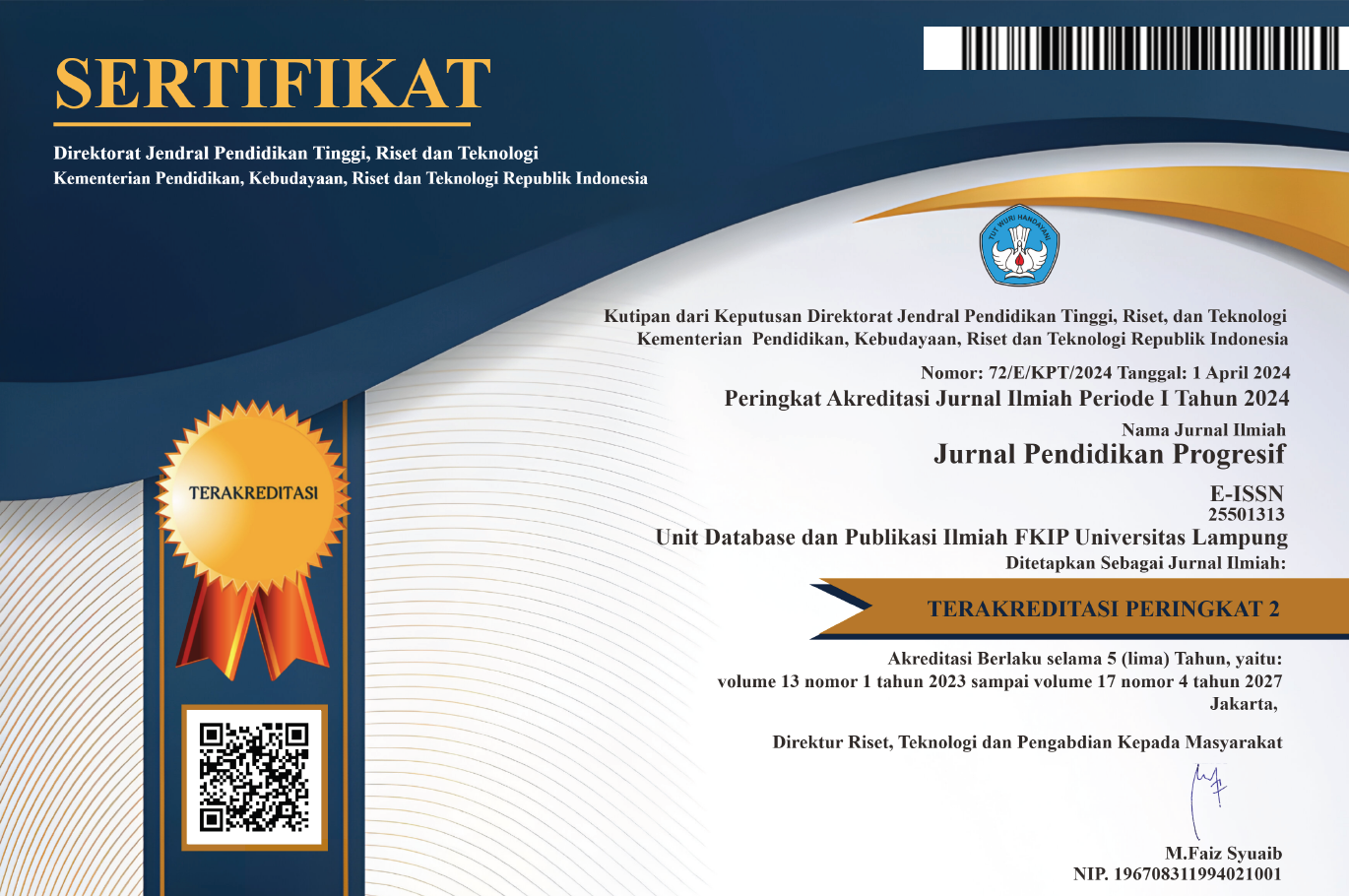Values of Character Education in the Sirih Pinang Symbol: A Cultural Value of Coastal Society
 Country:
Country:
(1) Universitas Negeri Semarang, Indonesia
(2) Universitas Negeri Semarang, Indonesia
(3) Universitas Negeri Semarang, Indonesia
(4) Universitas Negeri Semarang,
| Metrics→ |
| Indexing Site→ |
Copyright (c) 2020 Fitri Daryanti, Muhammad Jazuli, Totok Sumaryanto Florentinus, Hartono Hartono
Values of Character Education in the Sirih Pinang Symbol in the Nyambai Tradition of Saibatin Customary Community on the West Coast. Objective: This research aims to reveal the values of character education contained in the symbol of Sirih Pinang when the people of Lampung on the coast held a Nyambai tradition. Method: This research is a qualitative descriptive study, data collection techniques are conducted through observation, interviews, and documentation studies. Data analysis is done by reducing, display, drawing conclusions and verification. Findings: The results found that sirih pinang in a nyambai event used by the community as a symbol that regulates the behavior of the community. The use of sirih pinang in a nyambai event contains the values of character education that teaches about the value of unity, the value of respect, the value of togetherness, the value of friendship, mutual assistance and the value of tolerance that should be inherited to the young generation. Conclusion: Sirih Pinang in a nyambai event can be used as a guide line of knowledge for children in the conduct and behaviour in the daily life of both in the family, school, and in the community.
Keywords: values, character education, sirih pinang, nyambai tradition, indigenous event.
DOI: 10.23960/jpp.v10.i2.202013
Ariyani, Farida. (2020). Values of Character Education in Nyirok Tradition of Negara Batin Customary Community and Implications in the Local Wisdom and Ethics Education Course. Jurnal Pendidikan Progresif. Vol. 10, No. 1, pp. 38-46.
Berkowitz, M. W. & Bier, M. C. (2004). Research-Based Character Education. The Annals of the American Academy of Political and Social Science, 591, 72-85. Constance, J., & Lusher, J. M. (2019). The use of smokeless tobacco among UK South Asian communities, 6(1), 49–53.
Tanwir F, Altamash M, Gustafsson A. (2008). Influence of betel nut chewing, dental care habits and attitudes on perceived oral health among adult Pakistanis. Oral Health Prev Dent. 6(2):89-94.
Ferdiawan E, (2013). Esq Education for Children Character Building Based On Phylosophyof Javaness In Indonesia. Procedia - Social and Behavioral Sciences 106 (2013) 1096 – 1102
Giorgetti, Filiz meseci, (2017). Culture and Education: Looking Back to Culture Through Education. Paedagogica Historica, Internasional Journal of the History of Education.
Little MA, Pokhrel P, Murphy KL, Kawamoto CT, Suguitan GS, Herzog TA. (2014). Intention to quit betel quid: a comparison of betel quid chewers and cigarette smokers. Oral Health Dent Manag. 2014 Jun; 13(2) 512-518.
Miles, M., Huberman, A., & Saldaña, J. (2014). Chapter 5: Designing matrix and network displays. Qualitative Data Analysis a Methods Sourcebook, 107–119.
Oakley, E., Demaine, L., & Warnakulasuriya, S. (2005). Areca (betel) Nut Chewing Habit Among High-School Children in The Commonwealth Of The Northern Mariana Islands (Micronesia), 83(9): 656–660
Pala, A. (2011). The Need For Character Education, Internasional Journal of Social Sciences and Humanity Studies, 3 (2), 23-32.
Prajapati, D., Nayak, R., Nayak, U. A., & Shah, P. J. (2015). Areca Nut Chewing Habit in Preschoolers: Two Rare Case Reports and Literature Review, 1–5.
Rosselli, Monica. (2003). The Impact Of Culture and Education On Non Verbal Neuro psychological Measurements: A Critical Review. Brain and Cognition 52 (2003) 326–333.
Rokhman, F., Hum & Syaifudin, A. (2014). Character Education For Golden Generation 2045 (National Character Building For Indonesian Golden Years). Procedia-Social and Behavioral Science, 141, 1161-1165.
Sahitha, R. (2014). Effects of Smokeless Tobacco , Betel Quid and Areca Nut on Oral Mucosa, 13(2), 8–11.
Saidek, A.R, & Islami, R. (2016). Charakter issues: Reality Character Problems and Solutions Through Education in Indonesia. Journal of Education and Practice, 7 (17), 158-165.
Segal, Naomi. (2015). From Literatur to Cultural Literacy. Humanities. 4, 68–79; ISSN 2076-0787.
Shah, G. (2012). Arecanut As An Emerging Etiology of Oral Cancers in India, 33(2), 71–79.
Suyitno, Imam. (2017). Development of Culture Literacy to Build Student’ Character Throuht Learning. Journal of Innovative Studies on Charactr and Education. Vol I Issue 1.
Trivedy, C. R., Craig, G., & Warnakulasuriya, S. (2002). The oral Health Consequences of Chewing Areca Nut.
Williams, S., Malik, A., Chowdhury, S., & Chauhan, S. (2002). Sociocultural Aspects of Areca nut use.
Refbacks
- There are currently no refbacks.

This work is licensed under a Creative Commons Attribution-ShareAlike 4.0 International License.
View My Stats


